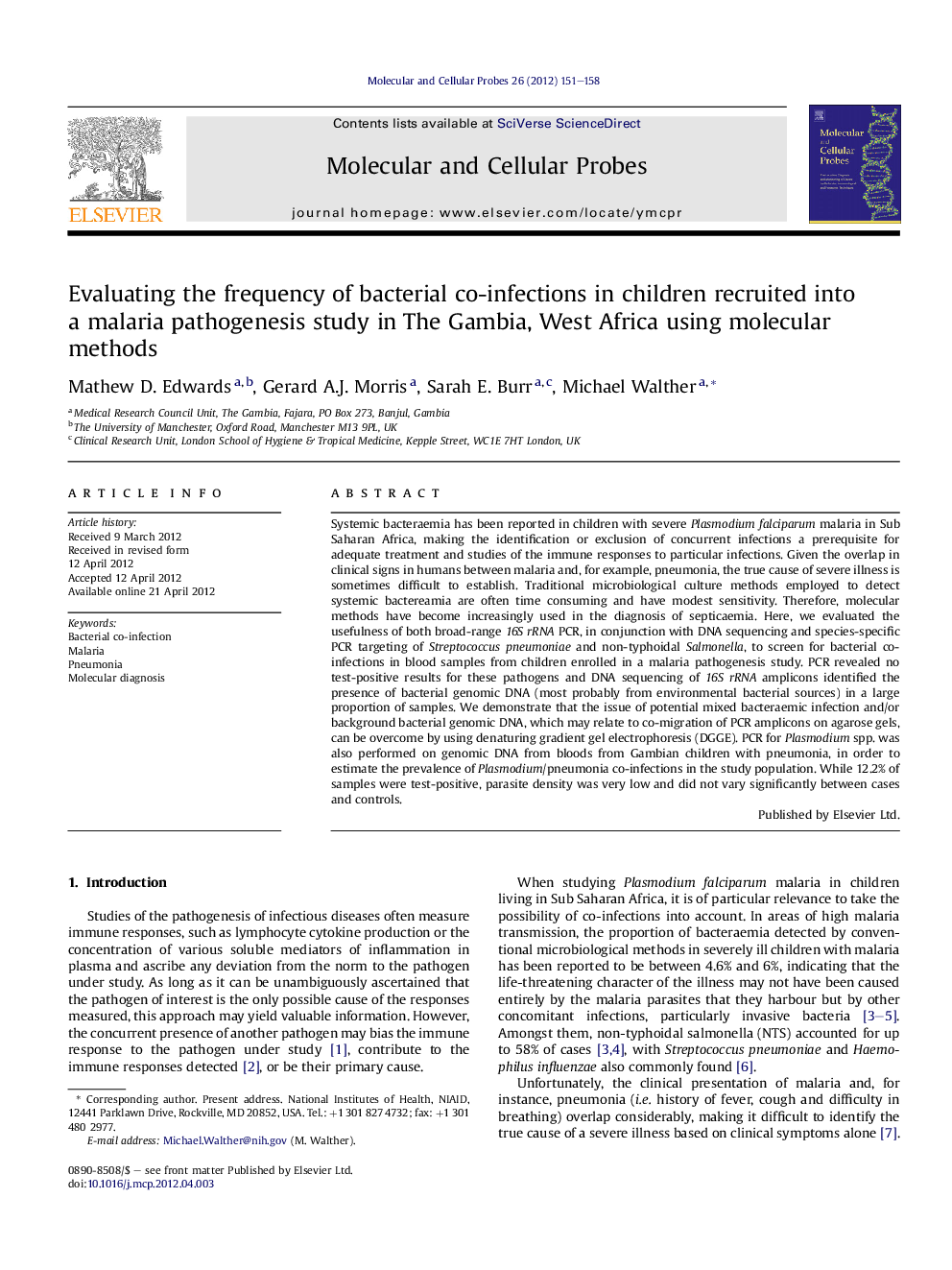| Article ID | Journal | Published Year | Pages | File Type |
|---|---|---|---|---|
| 2199791 | Molecular and Cellular Probes | 2012 | 8 Pages |
Systemic bacteraemia has been reported in children with severe Plasmodium falciparum malaria in Sub Saharan Africa, making the identification or exclusion of concurrent infections a prerequisite for adequate treatment and studies of the immune responses to particular infections. Given the overlap in clinical signs in humans between malaria and, for example, pneumonia, the true cause of severe illness is sometimes difficult to establish. Traditional microbiological culture methods employed to detect systemic bactereamia are often time consuming and have modest sensitivity. Therefore, molecular methods have become increasingly used in the diagnosis of septicaemia. Here, we evaluated the usefulness of both broad-range 16S rRNA PCR, in conjunction with DNA sequencing and species-specific PCR targeting of Streptococcus pneumoniae and non-typhoidal Salmonella, to screen for bacterial co-infections in blood samples from children enrolled in a malaria pathogenesis study. PCR revealed no test-positive results for these pathogens and DNA sequencing of 16S rRNA amplicons identified the presence of bacterial genomic DNA (most probably from environmental bacterial sources) in a large proportion of samples. We demonstrate that the issue of potential mixed bacteraemic infection and/or background bacterial genomic DNA, which may relate to co-migration of PCR amplicons on agarose gels, can be overcome by using denaturing gradient gel electrophoresis (DGGE). PCR for Plasmodium spp. was also performed on genomic DNA from bloods from Gambian children with pneumonia, in order to estimate the prevalence of Plasmodium/pneumonia co-infections in the study population. While 12.2% of samples were test-positive, parasite density was very low and did not vary significantly between cases and controls.
